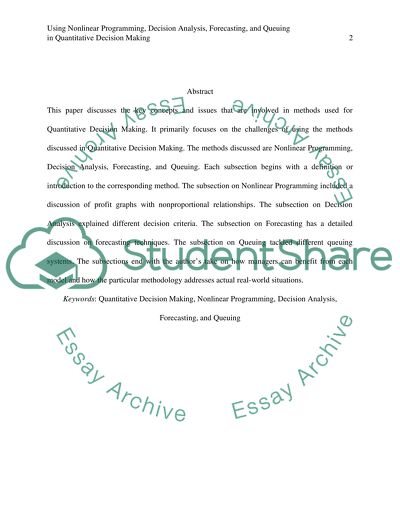Cite this document
(“Using Nonlinear Programming and Queuing in Quantitative Decision Essay”, n.d.)
Using Nonlinear Programming and Queuing in Quantitative Decision Essay. Retrieved from https://studentshare.org/information-technology/1573788-quantitative-decision-making
Using Nonlinear Programming and Queuing in Quantitative Decision Essay. Retrieved from https://studentshare.org/information-technology/1573788-quantitative-decision-making
(Using Nonlinear Programming and Queuing in Quantitative Decision Essay)
Using Nonlinear Programming and Queuing in Quantitative Decision Essay. https://studentshare.org/information-technology/1573788-quantitative-decision-making.
Using Nonlinear Programming and Queuing in Quantitative Decision Essay. https://studentshare.org/information-technology/1573788-quantitative-decision-making.
“Using Nonlinear Programming and Queuing in Quantitative Decision Essay”, n.d. https://studentshare.org/information-technology/1573788-quantitative-decision-making.


